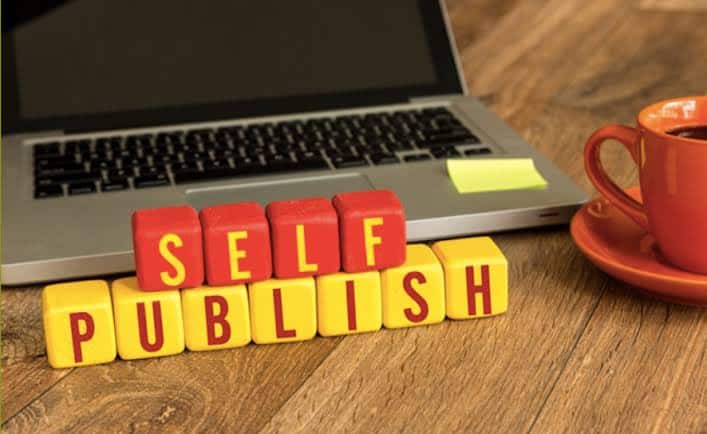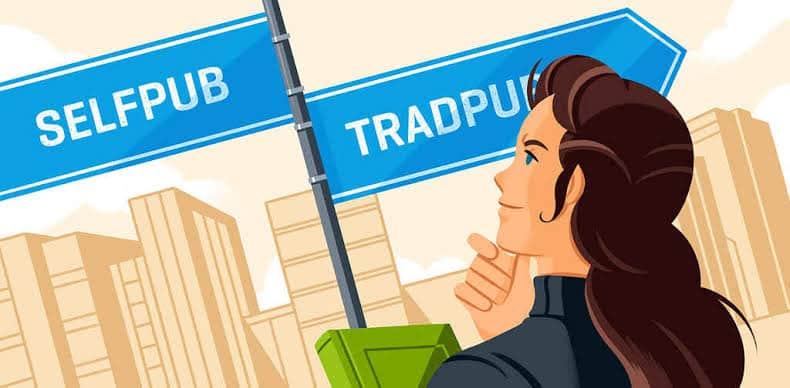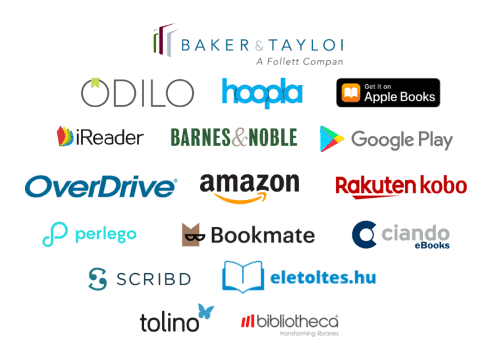Whether you’re a storyteller looking to share the next great work of fiction or a businessperson sharing advice in a book, self-publishing can unlock many doors.
But you need to understand that the tides are changing in the publishing industry. No longer do traditional publishers have a chokehold on publication.
What is Self-Publishing?

Self-publishing is the publication of media by its author at their own cost, without the involvement of a publisher. The term usually refers to written media, such as books and magazines, either as an ebook or as a physical copy using print-on-demand technology.
This new publishing term may also apply to albums, pamphlets, brochures, games, video content, and artwork. Self-publishing is a way for authors to get their work published without using a traditional book publisher.
Quick History of Self-Publishing

I self-published my first book in 2017 and remember feeling great about being among the first people to engage in this new form of publishing.
However, I was wrong. Self-publishing has been around since 1979 when desktop publishing was invented. With this method, potential self-publishers were given a chance to publish their work on their own terms. However, the literary scene was stopped by the invention of print-on-demand technology.
Although self-publishing is not a new phenomenon, it has become popularized by the Internet age with new technologies and services providing increasing alternatives to traditional publishing.
Difference Between Self-publishing and Traditional Publishing

To me, the main difference between self-publishing and traditional publishing is the degree of control the author has over the publishing process.
Traditional publishing is when you work with a mainstream known publisher to handle the creative process and distribution of your book. It typically pays an advance and royalties. Self-publishing, however, means paying an up-front cost for the publication of your book.
Unlike traditional publishing, you have a smaller distribution network behind the book but keep full creative control, which is great for an author.
Self-published authors also pay for everything on their own: editing, cover design, and book marketing. They own the rights to their book and keep 50-70% of royalties. Traditional publishers, on the other hand, relinquish the rights to the publishing house upon signing the publishing deal.
- SEE:
- The Ultimate Guide on How to Start a Successful Blog in 2023
- 50 Creative Journal Prompts For Kids
Publishing Platforms

In order to be purchased by a customer, the completed book must be hosted on a publishing platform. Amazon’s Kindle is the largest of these but there are others.
IngramSpark
IngramSpark lets authors publish digital, hardback, and paperback editions of their books. It distributes books to most online bookstores. It is run by Ingram Content Group.
Bambooks
Bambooks is a Nigerian digital library that gives you access to thousands of books, magazines & comics through a reading app. You also have an opportunity to earn money in a quarter as an author.
Okadabooks
OkadaBooks is one of Africa’s largest digital libraries and e-publishing platforms with over 250,000 users and 30,000 books published.
Apple
Apple sells books via its App Store which is a digital distribution platform for its mobile apps. Apple pays authors 70 percent of its proceeds at its Apple iBookstore where it sells books.
Publiseer
Publiseer is dedicated to helping African authors and artists publish their works on the World Wide Web. The company believes It’s critical for authors and artists to reach their fans and attract new fans that rely on trusted stores like Amazon, Google Play Store, and Apple Store to drive their discovery experience.
Smashwords
Smashwords allows authors and independent publishers to upload their manuscripts electronically to the Smashwords service, which then converts them into multiple e-book formats which can be read on various devices.
Barnes and Noble
Barnes & Noble pays 65% of the list price of e-books purchased through its online store called Pubit.
Kobo
Kobo is a Canadian company that sells e-books, audiobooks, e-readers, and tablet computers which originated as a cloud e-reading service.
Scribd
Scribd is an open publishing platform that features a digital library, an e-book, and audiobook subscription service.
Lulu
Lulu is an online print-on-demand, self-publishing, and distribution platform.
SEE: How to Start a Blog and Make Money
Advantages of Self-publishing

- In traditional publishing, there are a lot of processes. An author must first find an agent, then the agent must find a publisher, then it may take a year or more for the book to go through editing and be allocated a ‘slot’ in the publisher’s calendar. With self-publishing, it is possible to release a book within a few weeks after it is finished.
- For self-publishing, it costs nothing to upload a book to most publishing platforms. All you need to do is to agree to the platform’s terms and conditions.
- The author has full artistic control and may choose to do whatever they want to do with their literary works.
- The author can decide the price and can change at any point of time.
- Self-published authors may earn four to five times more per unit than if an author works with a traditional publisher, sometimes 70 percent of the sale price.
- Self-publishing removes the guard at the gate and opens up the world of authorship to anyone. This eliminates the dreaded query/rejection process that often ends up being a total waste of time.
- One of the benefits of self-publishing is that your book gets to market faster than it would via traditional methods.
Disadvantages of Self-publishing

- While it is possible to have a self-published book available for sale at brick-and-mortar bookstores, the majority of them are sold online. This means there are both reduced visibility and a somewhat restricted audience for your book.
- It could be bad that there is no physical presence for self-published authors. Traditional publishers distribute their books to high-street bookstores on a sale-or-return basis, which is unaffordable for a self-published author.
- Traditional publishers usually pay an advance, so the author receives some payment for the book even if it is unsuccessful, but with self-publishers, it won’t be possible.
- Traditional publishers pay all the costs associated with producing the book, and will provide an editor and cover designer at their expense.
- The self-published author must pay all their own expenses. Though it is possible to publish a book free of charge, marketing, and promotion are expensive.
- Marketing and promotion are time-consuming and costly.
- There is also a risk of plagiarism. It is relatively easy to download the text of an E-book and republish it with minor changes under a different title.
Conclusion
If you are thinking of self-publishing a book of your very own, you should know how it first got established. By knowing the incredible transformation self-publishing had to go through in order to gain recognition, you will be able to embrace the process even more.
